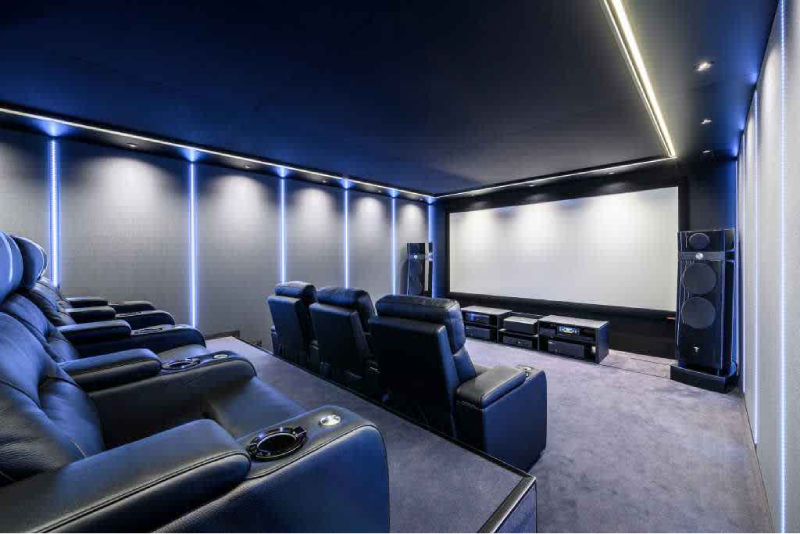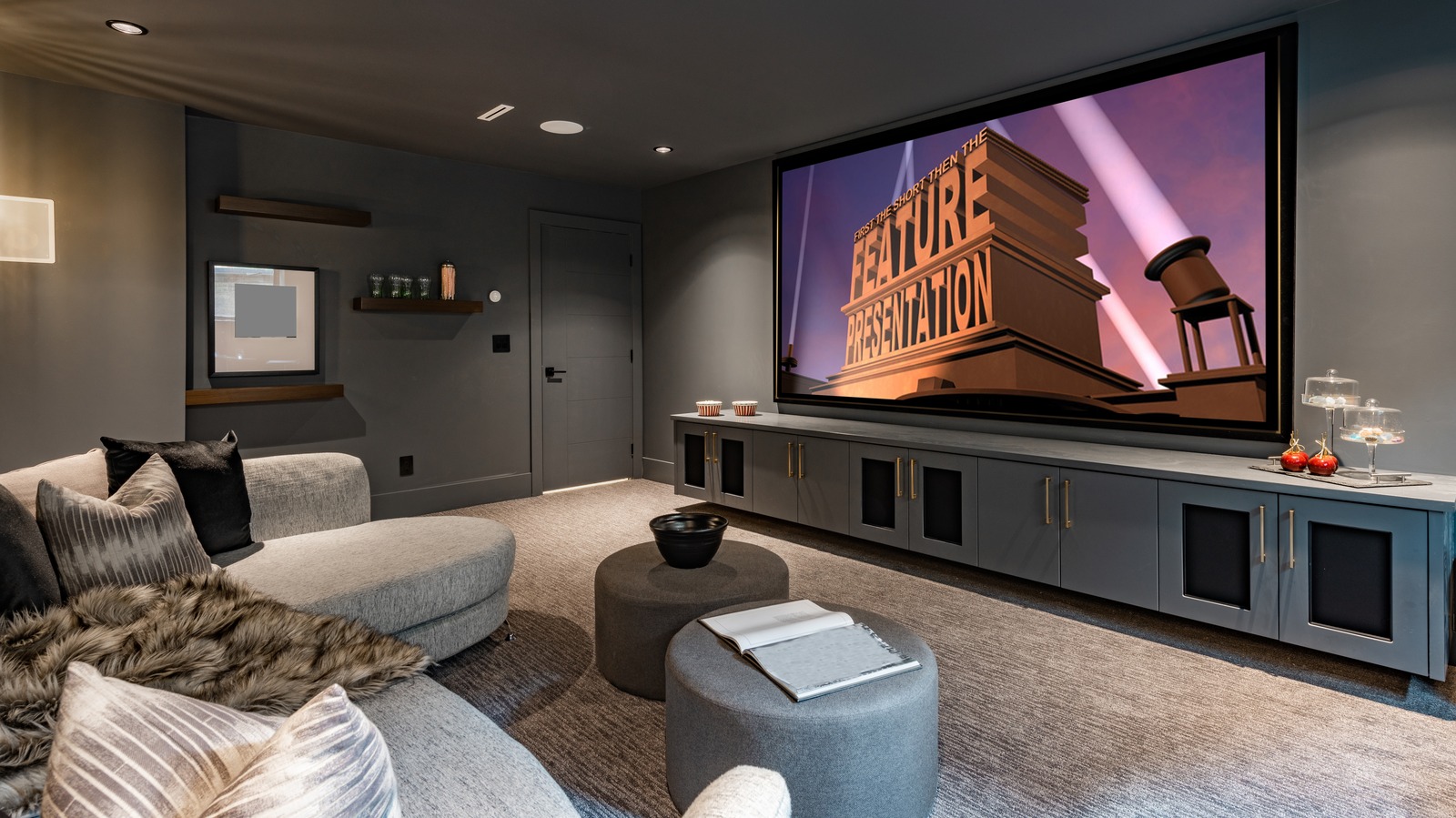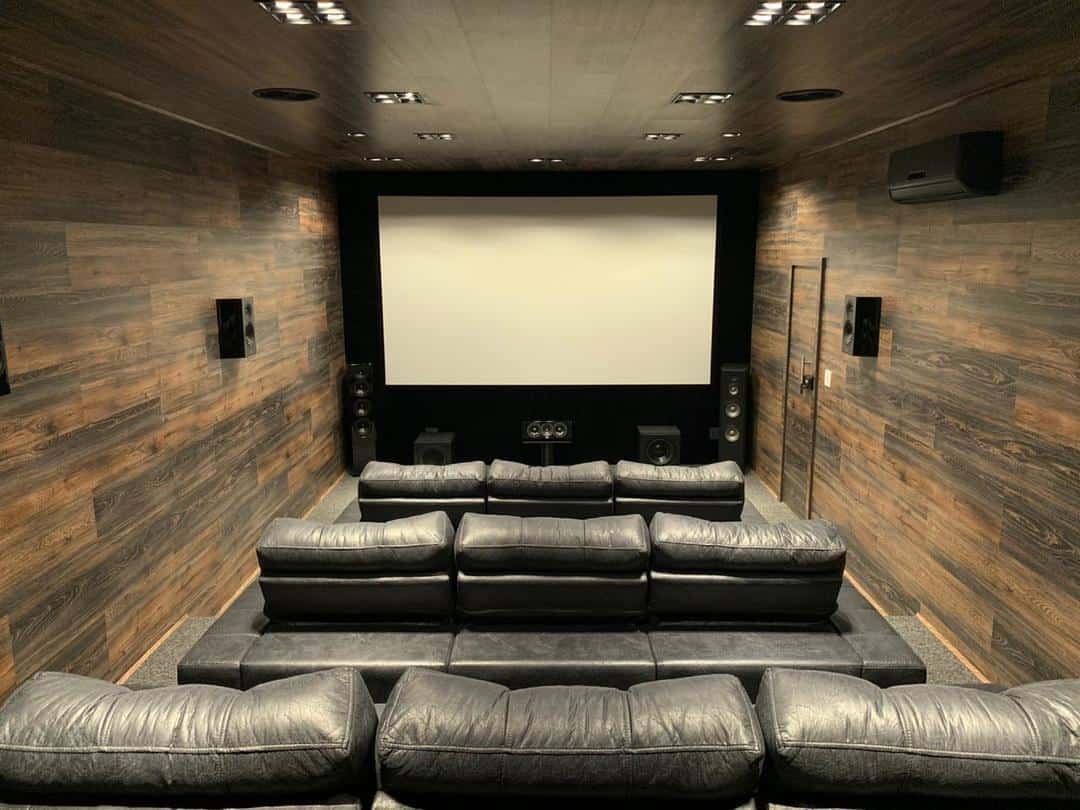Home Theater 101: Everything You Need to Know for a Motion Picture Experience in the house
Producing a home theater that equals the motion picture experience of an industrial theater includes mindful factor to consider of several components, including screen option, stereo, and space format. Each component plays a critical role in attaining the preferred setting and capability. Whether you are contemplating the suitable screen size or the details of surround sound, comprehending these fundamentals is vital. As we check out these important parts, it comes to be apparent that the options made can significantly affect your overall viewing experience, leaving one to ponder just how these choices will form your personal movie theater.
Selecting the Right Screen
When establishing a home movie theater, picking the ideal screen can make or break the checking out experience - tampa home theater installation. The display serves as the focal point of your setup, influencing image quality, seeing angles, and general aesthetic. Trick aspects to take into consideration consist of screen dimension, type, and resolution
First, determine the ideal display dimension based on your space dimensions and seating distance. A basic guideline is to rest roughly 1.5 to 2.5 times the angled display size for ideal viewing. Next off, select in between different screen types, such as fixed-frame, mechanized, or retractable screens, each offering distinct benefits. Fixed-frame screens typically give the very best image quality, while mechanized options enable flexibility in room usage.
Resolution is one more essential element. For an absolutely immersive experience, consider a display developed for 4K or perhaps 8K web content, making sure sharpness and clearness. In addition, consider the display's gain, which impacts illumination and comparison; a higher gain can boost brightness in well-lit spaces, while a lower gain might be better for darker settings.
Picking Sound Equipment
Audio equipment is a vital part of any home theater system, significantly boosting the overall watching experience. The selection of audio gear can identify the depth, quality, and immersion of sound, important for producing a cinematic environment.
When picking audio tools, take into consideration a border stereo, which usually includes a receiver, several speakers, and a subwoofer. A 5.1 or 7.1 network system is recommended, where the very first number stands for the audio speakers and the second the subwoofer, offering an immersive soundscape. The receiver is the heart of the system, handling sound and video clip signals, and need to support modern-day formats like Dolby Atmos for an enhanced spatial experience.
Quality speakers are important; search for models that provide a balanced audio profile with excellent bass feedback. Floor-standing audio speakers can produce richer noise, while bookshelf choices conserve room. Furthermore, consider wireless alternatives for ease of installation, although wired systems often deliver superior performance.

Optimum Seating Arrangements
Producing a perfect home cinema experience hinges dramatically on optimal seating arrangements. The arrangement of seats plays a crucial duty in both convenience and viewing high quality, straight impacting the general motion picture experience.
First, consider the screen size click over here now and seeing range. An usual standard is to place seats at a distance around 1.5 to 2.5 times next page the angled dimension of the display. This makes sure an immersive experience without straining the eyes.
Following, altitude is vital. If your seats remains in a tiered style, the back rows must be more than the front to prevent obstructions. For flat seating, ensure that the front row is not too near the screen, and that everybody has a clear view.
In addition, think about the arrangement in regards to social dynamics. Team seating can boost the common experience, while private seats might be liked for personal viewing.

Last but not least, prioritize convenience with ergonomic seats that supports prolonged watching durations. Integrating recliners or supported seats can considerably boost the experience, making the home cinema a preferred location for both entertainment and relaxation.
Lighting and Atmosphere
Reliable lighting and atmosphere are essential elements of a properly designed home theater, as they substantially affect the checking out experience. The appropriate lighting can improve the motion picture feel, while bad selections can interfere with it. For optimal outcomes, think about a split lights strategy that consists of ambient, job, and accent lighting.
Ambient lighting offers basic illumination, making sure that the room is not entirely dark, which can stress the eyes. Dimmer buttons are very advised, permitting modifications based upon the material being seen. Job lighting, such as wall sconces or floor lamps, provides practical lighting for tasks like analysis or browsing the room without interrupting the general environment.
Accent illumination can be utilized to highlight architectural features or produce prime focus, adding deepness and rate of interest to the space. LED strip lights behind screens or along shelves can give a refined radiance that improves the visual experience without frustrating the customer.

Wiring and Installation Tips
A well-planned wiring arrangement is critical for achieving optimum efficiency in your house theater system. Proper circuitry not just makes sure high-grade sound and video clip signals however also enhances the overall aesthetic of your room. Begin by mapping out your layout, identifying where each component will certainly be put, including your screen, audio speakers, and receiver.
When choosing wires, prioritize premium, suitably determined circuitry to minimize signal loss. HDMI cable televisions need to be made use of for video clip connections, while audio speaker wire need to match the specs of your audio speakers and amplifier. Choose for in-wall ranked cable televisions to follow safety requirements and maintain a tidy appearance.

Final Thought
In summary, producing an outstanding home check it out theater experience requires mindful factor to consider of various components, including display selection, audio tools, seating plans, illumination, and circuitry. By focusing on these factors, a motion picture environment can be efficiently replicated, allowing for immersive watching experiences that rival typical cinema settings.
Developing a home cinema that equals the cinematic experience of a commercial theatre entails mindful factor to consider of multiple parts, including display selection, audio systems, and room format.When establishing up a home theater, choosing the best screen can make or damage the watching experience. Next off, select between various screen kinds, such as fixed-frame, motorized, or retracting screens, each offering unique advantages. For a genuinely immersive experience, consider a display created for 4K or even 8K content, ensuring sharpness and clarity.In summary, developing a remarkable home theater experience calls for mindful consideration of different elements, consisting of screen option, audio equipment, seating setups, lights, and circuitry.